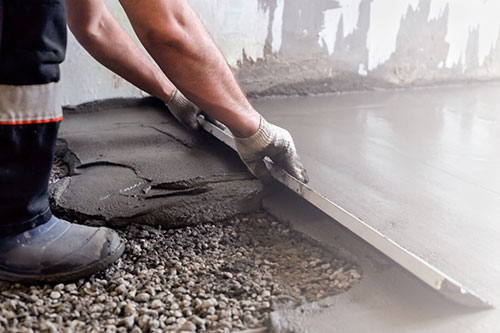With some extra considerations for weather, pouring a concrete foundation in winter is completely possible. You’ll need to pay attention to frost heaving, ensure your team is protected from the elements and follow winter construction best practices, but it’s far from an impossible job.
Even so, homeowners are likely to have concerns. Keep reading to learn more about prepping the ground, educating homeowners and more.
Top considerations for winter foundation pouring
Dennis Purinton is a member of the Concrete Foundations Association (CFA), and in his experience, there are four important factors to consider in cold weather concreting:
- Mix design
- Concrete temperature
- The correct balance of accelerator to concrete temperature
The ratio of water to cement is important, but a higher water content can also lead to freezing. Admixtures, like calcium chloride and non-chloride accelerators (NCAs), hasten the hydration process (thereby generating more internal heat and strength gain).
In terms of concrete temperature, the CFA’s research has found that the mix must be protected from freezing until it has reached 500 psi, and should be protected from multiple freeze/thaw cycles until reaching 3,500 psi. To increase the likelihood of reaching 500 psi before freezing, request a higher concrete temperature when it’s delivered to the job site.
Ground temperature is another important consideration — frozen ground expands, which alters the load bearing capacity of the soil. If a concrete foundation is built on frozen ground, the structure will settle when the soil thaws. Before freezing temperatures set in, builders need to insulate the ground with hay, followed by a tarp on top.
What to do when a homeowner is concerned about pouring a foundation during winter
You could have decades of experience pouring concrete foundations in cold temperatures, and homeowners would still be concerned. Answering seemingly endless questions can be frustrating, but taking the time to ease fears ahead of time will make everyone happier in the long run. If you encounter a reluctant homeowner, try:
- Explaining the entire process in layman’s terms
- Educating them about admixtures and how they create heat in the concrete
- Showing them photos from past builds
- Sharing informative articles from around the web
- Inviting them to the construction site to ask questions
If you regularly gather testimonials from past homebuyers, you could even ask a client to share their own cold-weather foundation experience. Hearing a success story from another homeowner can be a powerful way to calm nerves.
You could explain some of the primary benefits of building a home in the winter. For example, many construction businesses aren’t as busy during winter. Building during an off-peak time can reduce costs and waiting times, so homeowners can move into their new home before the busy spring construction season begins.
Protect your business and add value to your homes with 2-10 Structural Warranties for Home Builders.








